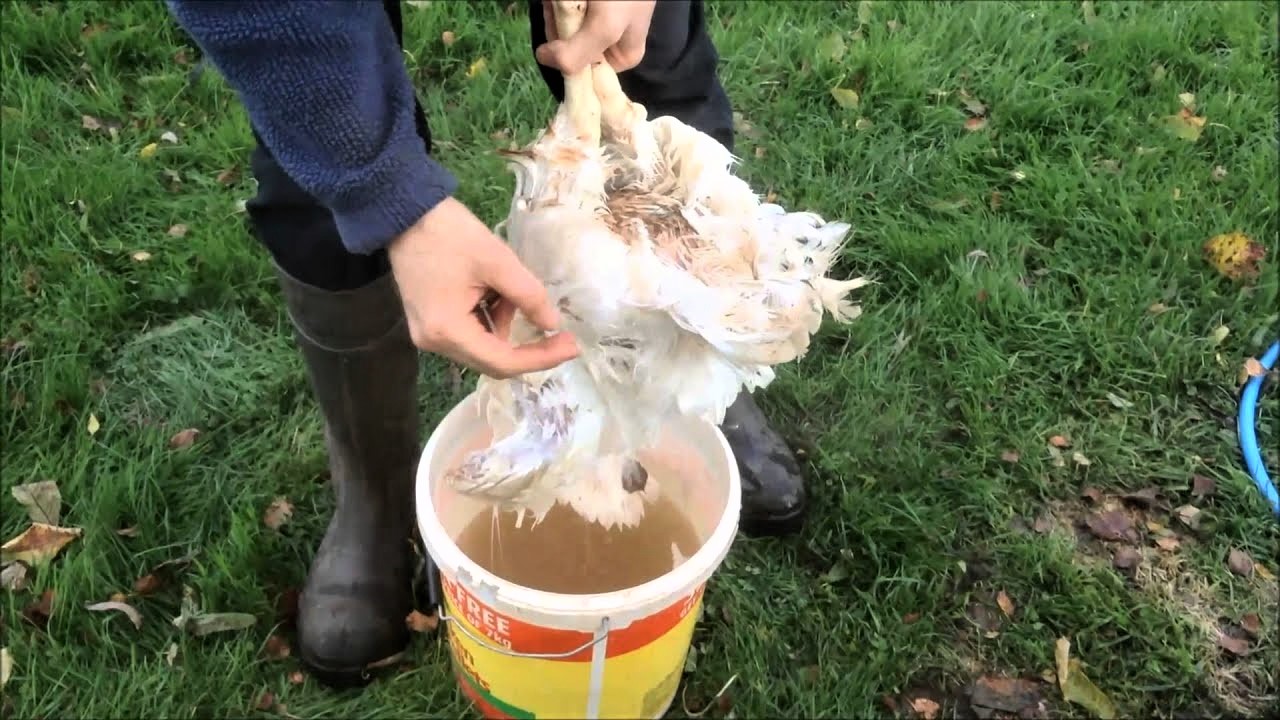How To Successfully Brood Chickens
When done properly, brooding can be a wonderful experience and a fantastic substitute for purchasing adult birds.
Fortunately, there are a few explanations for brooding that can help make sense of everything. Many of these categories apply to managing adult birds as well, but rather than adopting a one-size-fits-all approach, you will need to adapt the environment and the rules as your birds mature.
What Is Brooding In Poultry?
Technically speaking, brooding is the time from hatching until additional heating is no longer required. For the majority of people, this refers to the three to eight week period during which the chicks must be kept indoors or under a heat lamp. The breed will require brooding support for a longer period of time the smaller and slower-growing the breed is.
Your chicks are in a crucial phase right now. Since they can’t regulate their body temperatures like adult chickens do, they can’t handle most outdoor environments, are rapidly growing, and are most susceptible to disease. Incorrect incubation or poor parent stock are also most noticeable during the brooding stage; sickly chicks are more challenging to raise and require more intensive management.
How To Successfully Brood Chickens
We’ll list the numbers here specifically for chickens; for other species, use different numbers.
Climate And Lighting
Heat and light to see by are two needs that your lighting fixture satisfies. Heat lamps are typically hung over the brooder when raising chickens in the backyard. Unlike pan brooders or heaters, these lamps are simple to locate at nearby feed supply stores or online and are inexpensive. By raising and lowering the lamp, a heat lamp’s output temperature can be easily changed. Always use a chain or rope to hang lamps instead of their electrical cords because doing so makes it simple to start a fire.
Color conditioning is yet another advantage provided by heat lamps. Different colored lamps—red being the most popular—are used in color conditioning to modify the behavior of chickens. Red lamps have been shown to lessen aggression in most species of poultry, whereas studies on blue, yellow, and green lighting have not revealed any appreciable change in chick behavior. Due to this, most suppliers will include red lights alongside their standard incandescent models.
Although changing the height of your lamp may seem like an easy way to change the temperature in your brooder, actually doing so can be challenging. According to the rules, there should be a thermometer in the middle and another on the edge of your brooder, with a maximum 10-degree difference between them.
In practice, most people adhere to the cluster rule: If your chicks are all grouped together under the lamp, it’s too cool; if they’re all grouped together near the edge of the brooder, it’s too warm. They ought to be able to move around freely while distributed evenly throughout the brooder.
Airflow And Humidity
Ventilation and humidity are very closely related, much like light and heating. By removing the water vapor from the air, high ventilation reduces humidity; conversely, low ventilation can result in excessive humidity, which results in a soggy environment. In small brooding situations, balancing the two against one another is usually simple, but as the flock size increases, it becomes more challenging.
Anyone who has raised chicks in an enclosed space knows how potent that eye-burning odor in an uncleaned brooder can get. Ammonia fumes are the main reason ventilation is important. You must take care not to overdo the ventilation, though, as this could result in drafts that are too cold for the chicks.
Small flocks are less affected by humidity than are commercial flocks: Very few small flock brooders are completely closed systems, allowing humidity to rise to unsettling heights. If your bedding is still reasonably dry and hasn’t become too wet, your humidity level is fine. You can increase ventilation to dry the litter if it’s wet and you’re confident the chicks won’t get cold. To measure the humidity during brooding, you can purchase a hygrometer if you want to be extremely prepared: It is recommended to use between 30 and 50 percent during the first week and between 40 and 60 percent after that.
Guidelines For Bedding
Change it frequently.
Make a good change.
The best way to avoid mold, odor, and disease in small flocks is to change your bedding frequently. It’s crucial to use absorbent litter material: It’s best to use rice hulls and pine shavings. Despite the fact that they are frequently used, paper, straw, and hardwood shavings (especially oak) are not particularly good choices. Straw tends to easily form mats and does a poor job of absorbing moisture from feces.
For novice poultry owners, the feed nutrition is frequently the trickiest part. When should a starter diet be fed instead of one for layers or growers? What exactly is the difference?
To make things even simpler, you can use the same starter feed for meat and layer birds. Starter feed is designed to be the proper nutritional balance for growing birds. It should be consumed for the first eight weeks of life and is designed to be high in protein (20%).
Also Read 8 Benefits Of Raising Chickens in Battery Cage System
Depending on your breed, you should feed for a variety of times. While fast-growing meat birds are prepared to switch to their own in-between food (often referred to as grower food) within a few weeks, slow-growing show breeds require that nutritional support for a longer period of time. Breeds of layer and show animals skip this stage and transition straight to a maintenance adult diet, also known as a layer diet. The transition of meat birds to their final diet, known as finisher feed.
Owners of small flocks are also concerned about hormones and antibiotics in their feed. There are a lot of people trying to raise their flocks organically, and they have a lot of questions, many of which have conflicting answers in the media and online. First, in terms of hormones, no poultry feed contains any kind of hormone. This is due to two factors: first, commercial producers find it economically absurd to use hormones in poultry due to the bird’s shorter lifespan and lower individual value. No hormones are added there either because the backyard feed is also driven by economics and public opinion.
You also need to think about the feed dispenser. In their first few days of life, chicks require food that is simple to get. Put down paper with the heat lamps.
The best feeding methods during this time are trough feeders or pan feeders; adding some feces to your food during those crucial days will ensure that your chicks don’t go hungry. Since most trough feeders have a roof attachment with head holes for when the chicks are a little older to prevent them from pooping in the feeder, they are particularly nice. For older chicks, bell feeders are another choice; however, with smaller chicks, be careful as they might try to climb inside the feeder and get stuck.
Water
Your later watering system will be determined by the water system you select for brooding. Chickens can retrain their drinking habits, but while they are getting the hang of it, you might experience problems with dehydration or even mortality.
To lessen contamination from feces, food, or bedding, change the water twice daily. To stop mold and bacterial growth, water systems should be scrubbed, flushed, or washed once a week (1 tablespoon chlorine bleach to 1 gallon of water). Additionally, water must always be accessible; the waterer should never be left off overnight or for longer than 15 minutes at a time.
To avoid wasting your medication, replace the water once daily if you must administer any medications, especially antibiotics or mineral/vitamin additives. Given that only a small number of medications are approved for use in poultry, consult your veterinarian before using them on chickens.
During the brooding period, you should anticipate losing 1 to 2 percent of your chicks; this percentage will rise if the chicks were cold or dehydrated, had infected navels, or came from weak or young breeding stock. Losing them after the first week is always improper management; losing them more than this during the first week indicates a bad source for chicks, a bad batch of chicks, or poor management. You can determine whether you need to take a closer look at your incubation system, your initial management practices, or your long-term brooding management by keeping track of your losses.
Becoming A Brooder?
How do you begin now that you’ve got every aspect of raising chickens under control? Where you intend to raise these should be the first point of focus.
When the chicks are placed, incubators should be ready to go, which calls for a minimum of six hours of heating beforehand. You will need to start pre placement heating earlier if the brooding area is larger. To ensure there won’t be any unanticipated changes in the temperature in your brooder, you should ideally have been keeping an eye on it for 12 to 24 hours.
Between each brood, everything needs to be cleaned and sanitized. To stop the spread of disease between flocks, some good ol’ fashioned scrubbing, bleach, and sunlight are usually sufficient. Never forget that cleaning comes before disinfection for best results.
Brooding outside will require a little more attention to ensure that drafts or changes in the outside temperature don’t disrupt your carefully arranged small environment. Brooding indoors eliminates some temperature variations but exposes you to the dangers of cats, dogs, young children, and chick dust.
Summary – How To Successfully Brood Chickens
Brooding is a lifelong learning process, but if you follow these guidelines, you’ll be well on your way to becoming a master. The good news is that your chickens spend only a small portion of their lives brooding. The chicks can venture outside to start their adult lives once they are feathered, capable of regulating their own body temperatures, or the weather is suitable.


